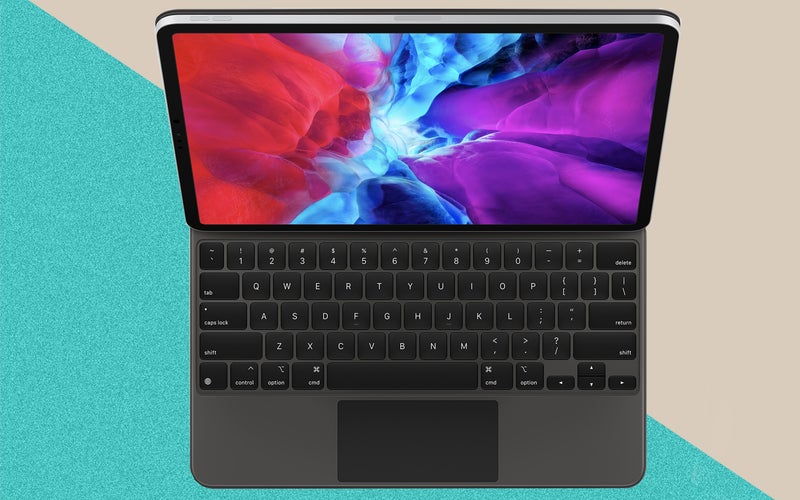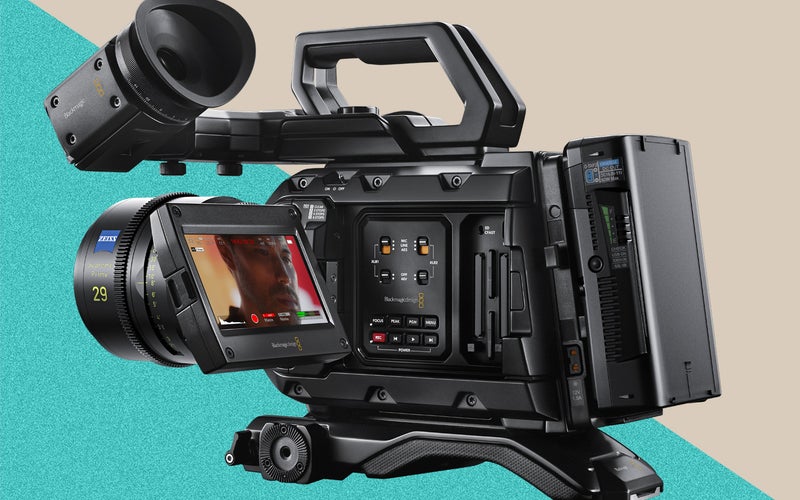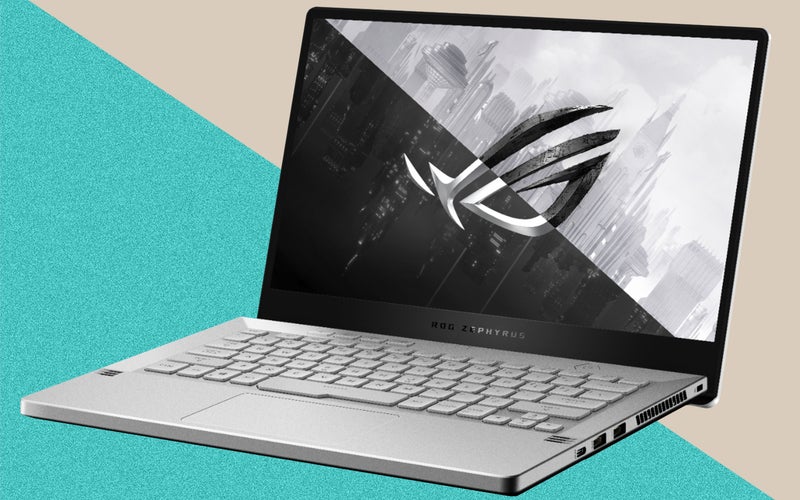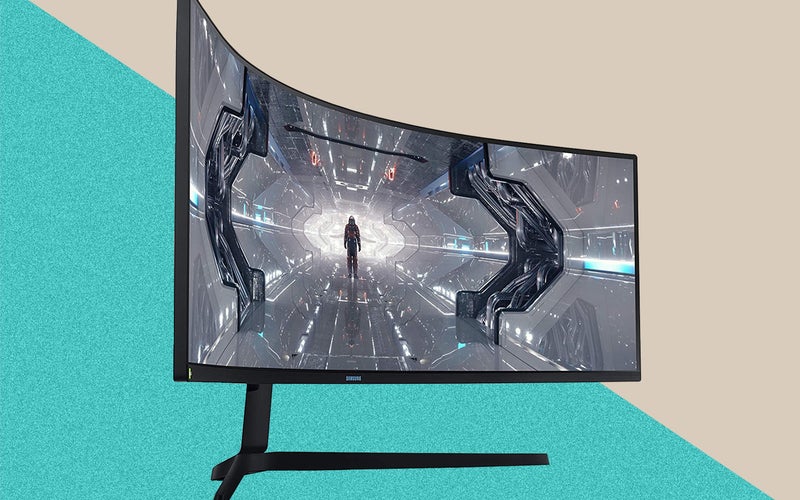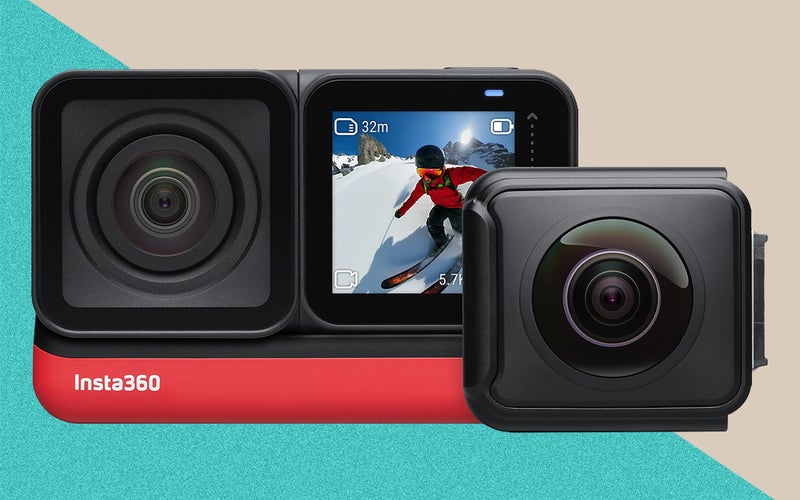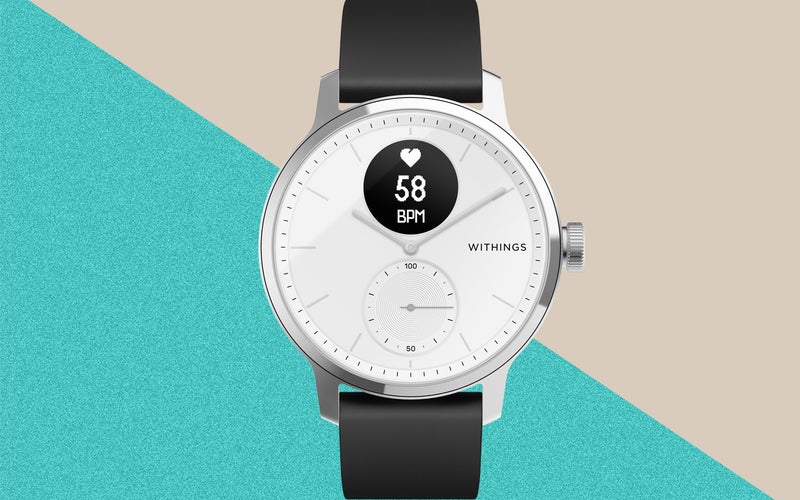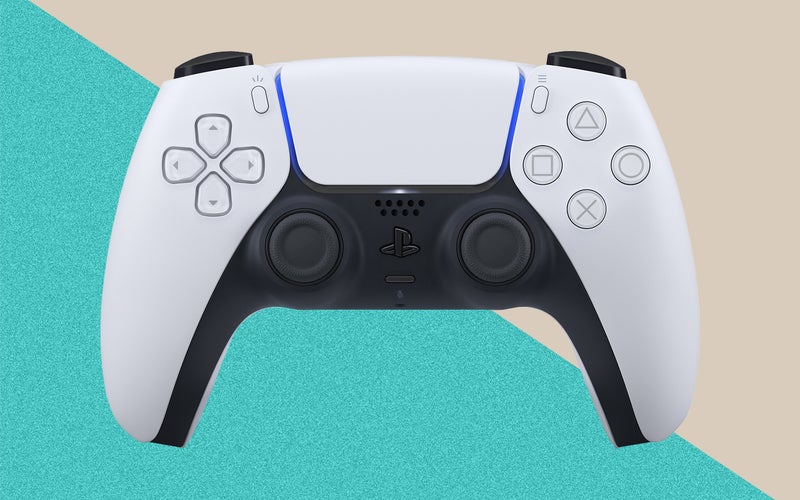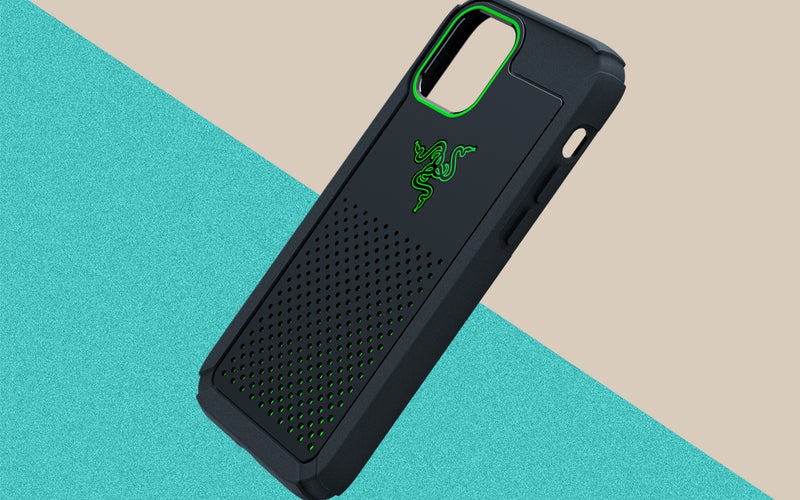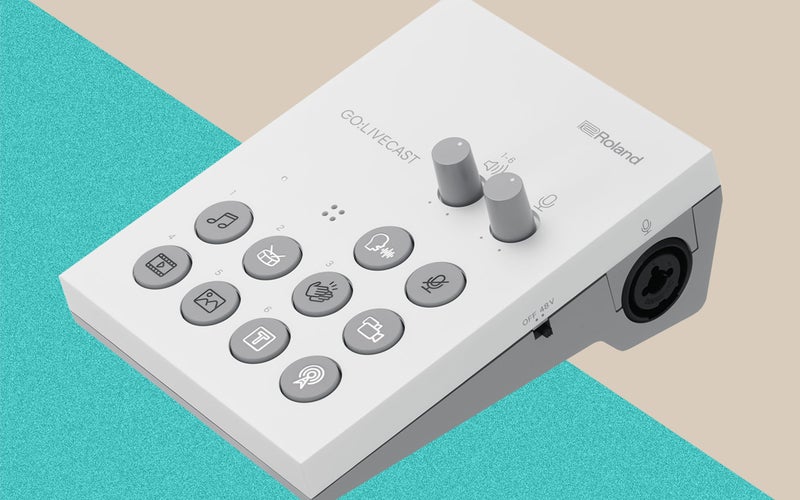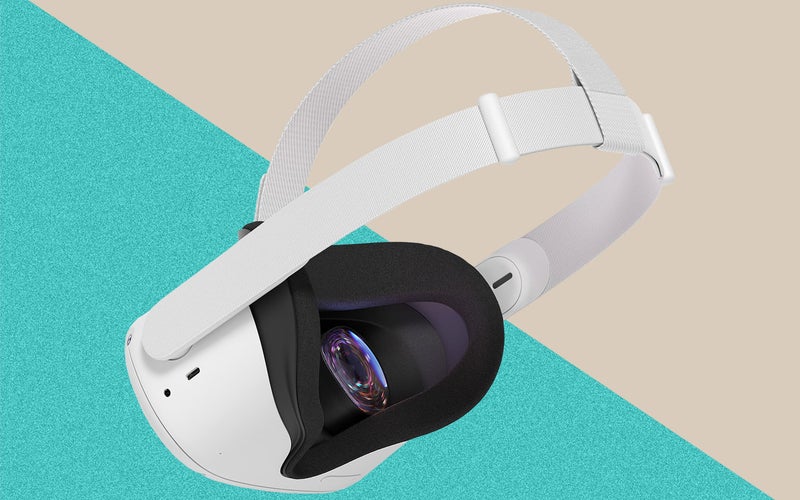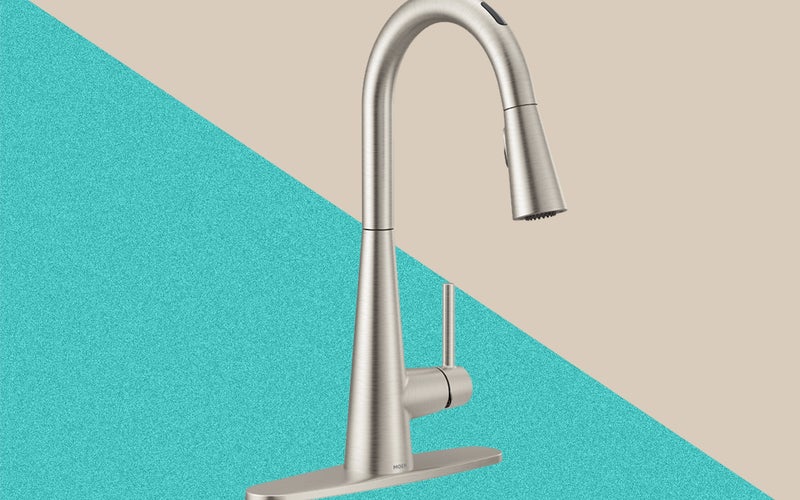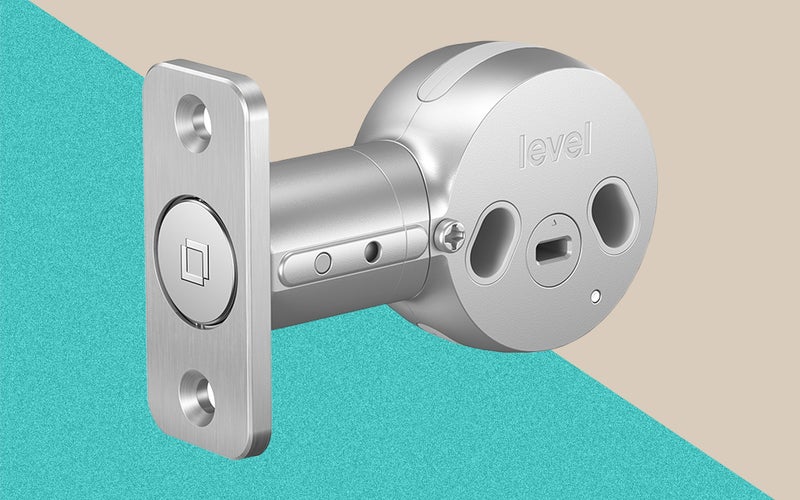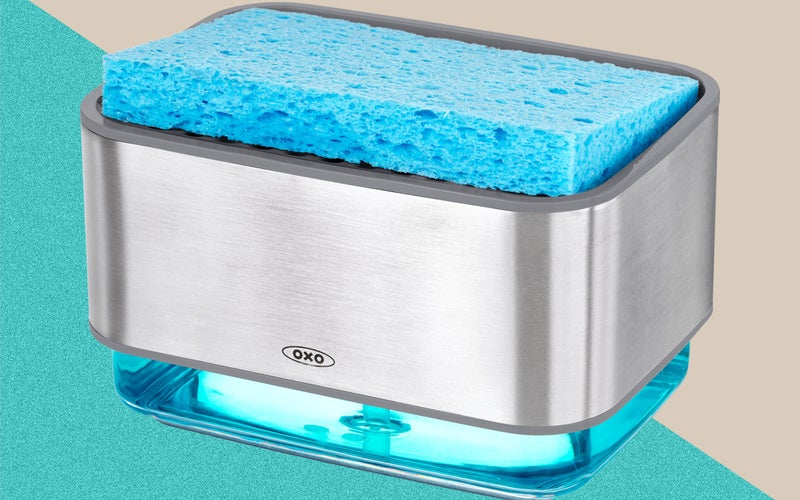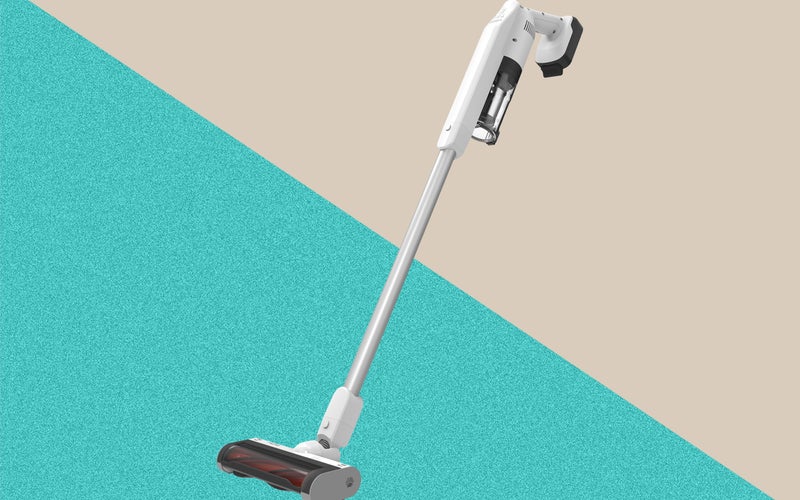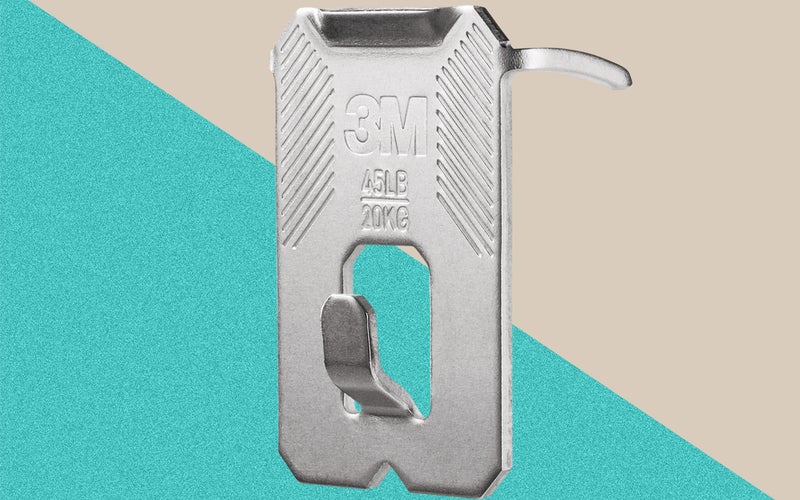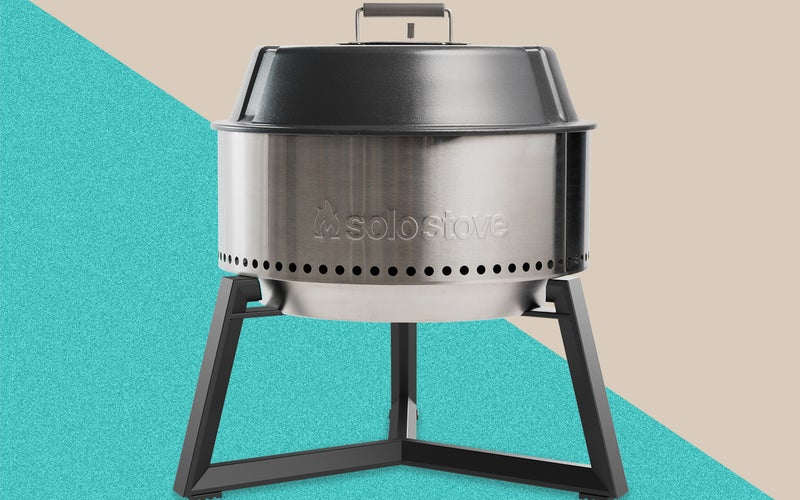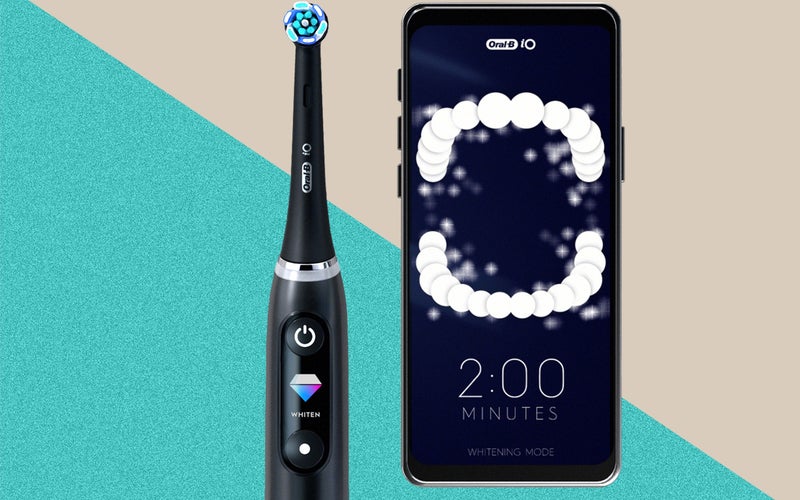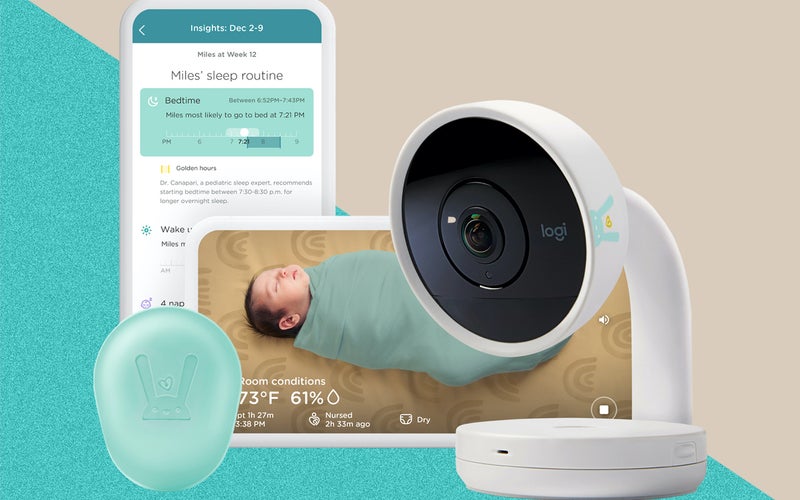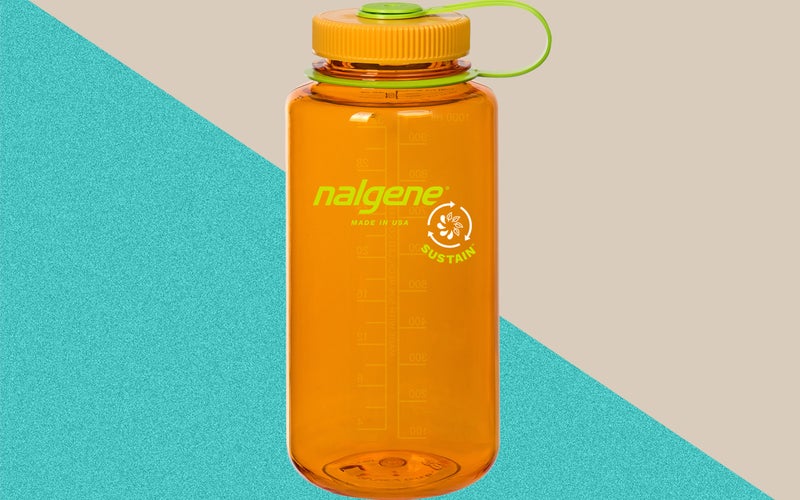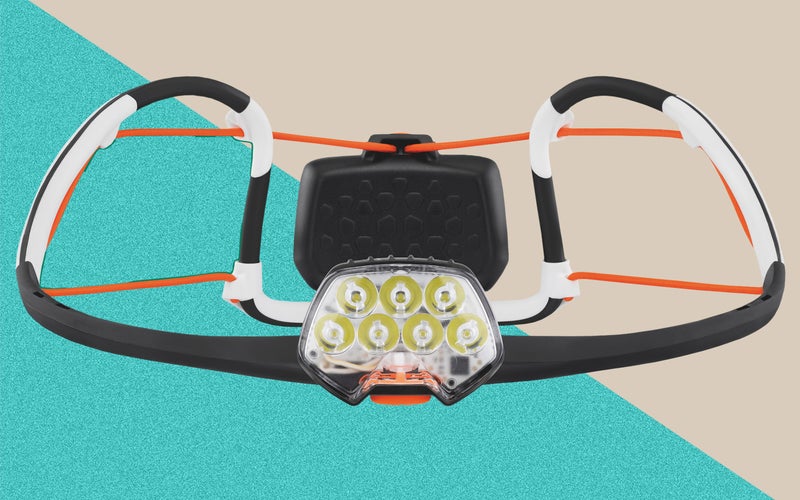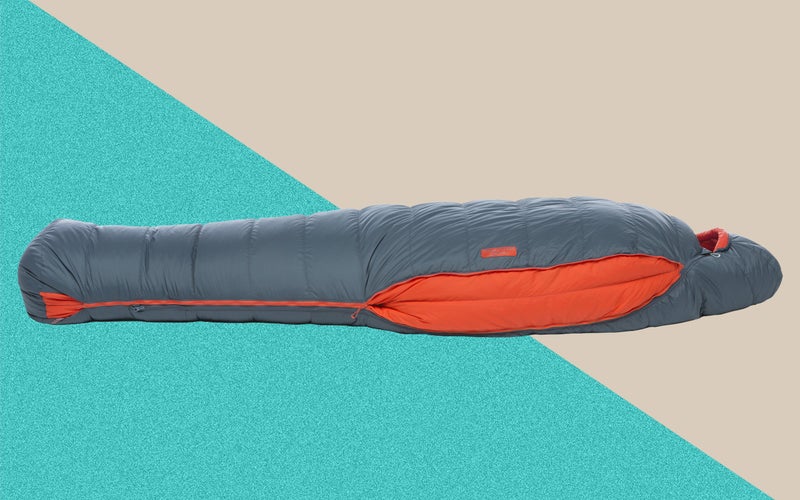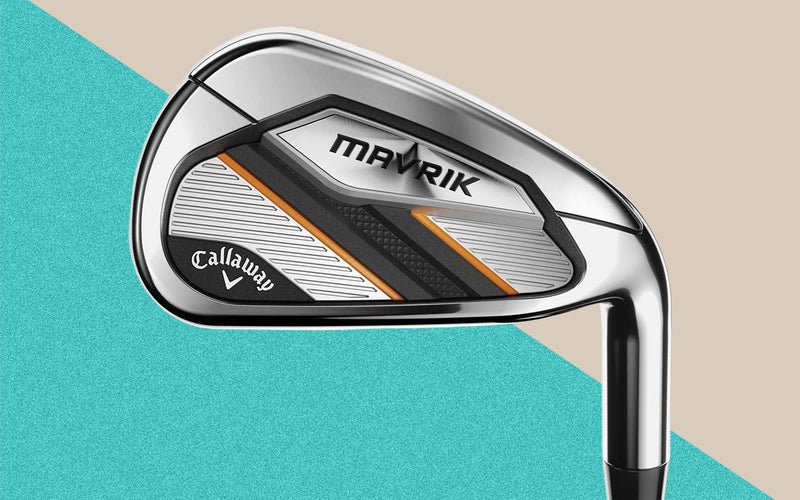The 100 greatest innovations of 2020
The 33rd annual Best of What’s New awards.
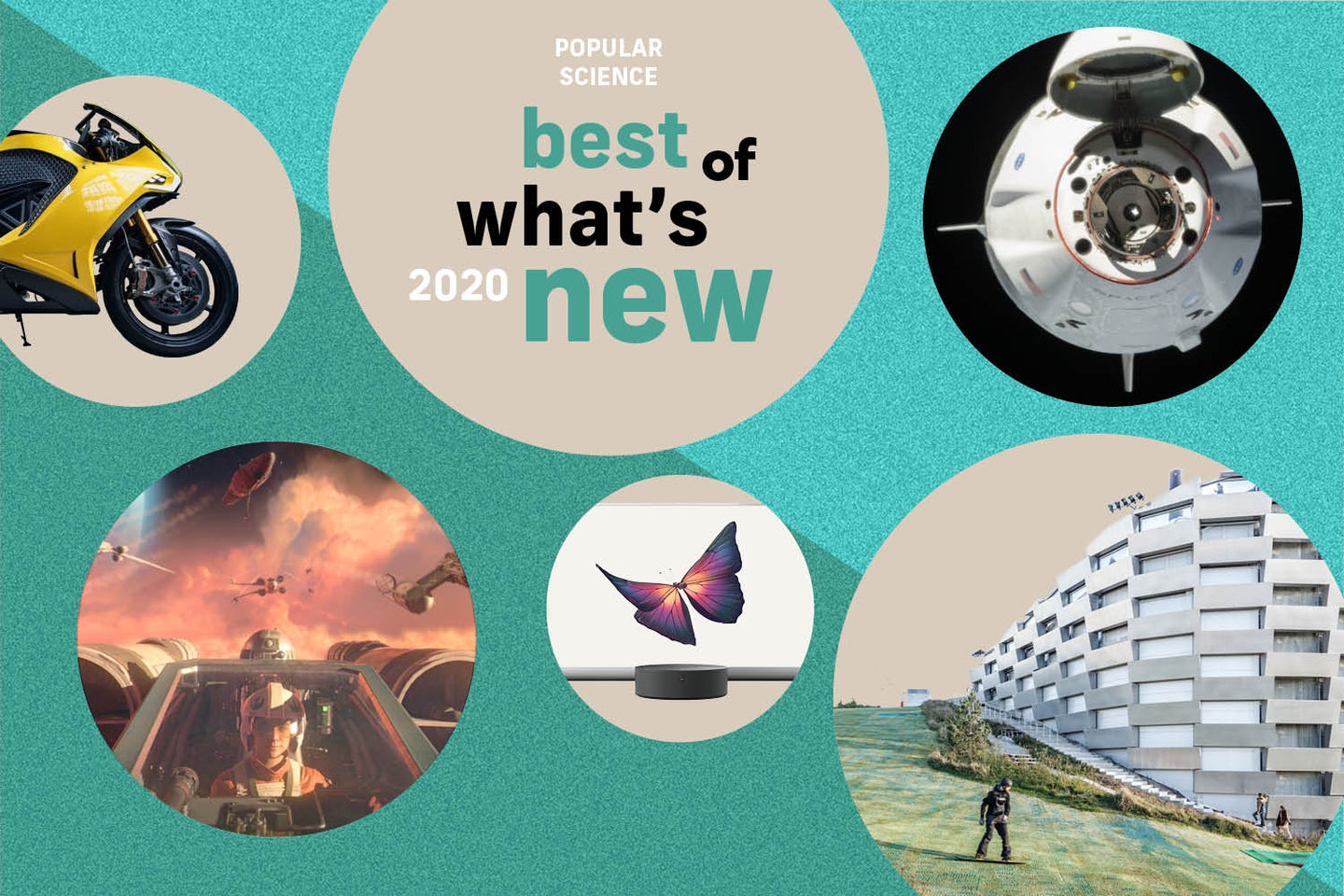
Every year since 1988, the PopSci staff has crammed into conference rooms to debate the year’s most important innovations. As we’d weigh the merits of glitzy gadgets and record-breaking rockets, our hands would snag slices from a stack of pizzas, reach for one-too-many diet soda refills, and fling fun-size candies across the room. In 2020, the chatter was the same, but we were different. Amid an ongoing COVID-19 threat, editors and researchers put on their best pajama pants, logged onto Google Hangouts (BYO peanut butter cups), and evaluated thousands of products and projects from afar to select the Best of What’s New: 100 breakthroughs that are windows onto what we know can be a healthier, happier, more-hopeful future.
The result is a celebration of ingenuity, what we can accomplish together when challenges both personal and global arise. Consider this: In 2020, a pair of massive tech rivals banded together, and what they created could change how we fight COVID—and other public health threats we don’t even know about yet. (That duo also takes home our highest honor because of it.)
Across all 10 of our categories, the pandemic barely slowed the stream of innovations coming into the world. This year gave us an alternative source for real dairy products (no cows necessary), perfect-fitting jeans that only an algorithm could create, revamped airbags that keep passengers safer than ever, and gaming consoles that bring new dimensions to our much-needed distractions. Of course, there’s also a rapid COVID test—a milestone we didn’t even know we needed just a year ago.
We take every year’s awards very seriously, but this list, our 33rd, is special. Even in months of tumult, engineers, developers, and scientists persevered—and we’re honored to shine the spotlight on their work. We can’t wait to see what barriers they break next.
Security

Who gets access? That’s the question that drives every security measure and innovation that’s landed on PopSci’s annual compendium since we launched the category in 2008. Every year, that question gets bigger and bigger. In 2020, the world quaked under a global pandemic that took 1.4 million lives, the US saw a rebirth in its civil rights movement, and a spate of record-breaking wildfires forced entire regions to evacuate. And those are just the new scares. A buildup of angst against ad trackers and app snooping led to major changes in hardware and software alike. It was a year full of lessons, nuances, and mini revolutions, and we strive to match that with our choices.

Innovation of the Year: Exposure Notifications System by Apple and Google
A virus tracker that doesn’t track you, too
Of all the tools missing from the US’s pandemic response, digital contact tracing, which maps the local spread of a virus through the movements and interactions of people who are infected, felt the most within reach. A handful of countries, including Taiwan and Ireland, have curbed COVID-19 with apps that keep tabs this way. But privacy tradeoffs and stigmas abound. So, two of the biggest smartphone makers—and fierce rivals—came up with a solution. Google and Apple’s application programming interface, a type of device-agnostic code, ducks the biggest Big Brother concerns by directly alerting anyone at risk of infection instead of storing individuals’ locations in a centralized database. First adopted by European countries like Switzerland and Austria, and now in play in more than 20 US states and territories, the Exposure Notifications System sends a ping every time it senses another phone’s Bluetooth signal, usually within a 6-foot radius. If someone with whom you’ve exchanged beacons reports a positive coronavirus test, the system alerts you so you can get checked yourself. Every step of the process requires user consent, and apps built over the interface block other devices from accessing your personal info. Getting folks to self-report is a challenge, but with medical resources stretched so thin, it helps to have tech that reminds us to do our part—during this public health crisis and the next.

WireGuard by Jason A. Donenfeld
The safest VPN for virtual workspaces
At the heart of every modern office lives a virtual private network (VPN), a shared access point that connects computer to server, worker to coworker. Most of these encrypted services rely on hundreds of thousands of lines of code, which can gum up security. Not WireGuard. Created by a single developer, the client taps less than 4,000 lines of code to fire up speedy connections and defend against hackers. The programming is so streamlined, a one-person crew can review it for vulnerabilities in an afternoon. And while VPN demand surged by as much as 40 percent early in the pandemic, popular operating systems like Linux, Windows, MacOS, Android, iOS, and OpenBSD snapped up the protocol in just the past few months.

Hey by Basecamp
The ultimate spam-blocking email
Every time you open an email, you risk becoming a marketing data point. By embedding invisible images known as spy pixels in the message, senders can find out when you opened it, where you were, what device you were on, and how much time you spent scrolling through the contents. The subscription email service Hey not only blocks these snoops, it also tattles on trackers and tells you exactly what kind each message in your inbox is using. And, unlike leading platforms like Gmail, Hey doesn’t serve ads or mine and sell user data.

Blur tool by Signal
An extra coat of armor for activists
While historic numbers of people marched against racial injustice in the US this year, the nation also saw an uptick in vigilante violence. To protect the identities of activists and other users on its messaging app, Signal added a simple-to-wield blur tool that automatically reads faces on images and pixelates them. It also includes a manual brush feature, in case it misses a spot or needs to scrub out other giveaways like a street sign. If you snap the photo through Signal, it won’t save the original version, so the blurring magic is truly irreversible.

Maritime Mine Countermeasures by Thales Group
Defusing underwater bombs the safe way
Earth’s oceans are littered with hundreds of thousands of unrecovered mines dating back as far as World War I. So the aerospace company Thales Group created a robotic maritime bomb squad for the French and British navies that can detect, identify, and destroy these explosives—all while keeping humans out of harm’s way. Uncrewed ships equipped with sonar spot suspicious objects from different angles, and an extended telescopic arm wields a nail gun to attach an explosive charge. Crews at a portable operations center up to 35 miles away then detonate the charge, destroying the mine for good.

Linksys Aware by Belkin International
The first home-security system without a camera
If you want to keep an eye on your home without generating a ton of video footage, now you can put your mesh router to work detecting movement. Because nodes in its Wi-Fi system are constantly beaming radio waves back and forth, Linksys Aware can spot changes in intensity of those waves caused by an object moving through the network’s coverage area—a first. Alerts ping the Linksys app, and you can set sensitivity levels to avoid false positives from, say, your dog chasing its tail in the kitchen.

Clipboard notification in iOS 14 by Apple
Copy and pasting with no regrets
Over the summer, two developers revealed that many iOS apps like TikTok, Zillow, and Twitter were quietly accessing users’ clipboards, which temporarily store passwords and other sensitive information, without people’s knowledge or consent. Apple took note and unfurled some changes with an iOS update that debuted a few months later. Phones will now send their owners a pop-up message when an app or widget saves text from the clipboard. What’s more, the feature has discouraged developers from spying in the first place: LinkedIn and Reddit are among the apps that have since removed code that mooched off Apple users’ copy-and-pastes.

Team Awareness Kit by Air Force Research Laboratory/Colorado Center of Excellence for Advanced Technology Aerial Firefighting
Mapping dangers in real time for wildfire crews
Even with wildfires growing more intense each season, overtaxed firefighting crews still depend on 1950s technology like walkie talkies to stay connected. The Team Awareness Kit app, which became widely available on the Google Play Store this past summer, piggybacks off of GPS on Android phones to help first responders track team members without relying on cellular networks that sometimes cut out in the field. First used by firefighters at Grizzly Creek this August, the app has both online and offline maps, and lets users mark and share their locations, files, photos, and videos while also communicating via chat or livestream. The Colorado Center of Excellence is now working with the US Forest Service to develop a national real-time database for wildfires through the app.

Ripsaw M5 by Howe & Howe, Textron Systems, and FLIR Systems
Giving an old army favorite a robotic renovation
In its fifth generation, the so-called Ripsaw is set to become the US Army’s first fully autonomous ground vehicle if it passes field tests in the next two years. In addition to speeding along silently on batteries in all terrains and conditions, it also comes with a couple other sneaky bonuses: A nested robot can scout ahead and neutralize improvised explosive devices, and an unmanned tethered aircraft can run recon with a barely detectable heat signature. But most impressive is the vehicle’s AI sensory system, lifted from FLIR’s self-driving car tech. An array of four cameras provides 360-degree image composites, while an AI IDs objects surrounding the vehicle—discerning attackers from civilians and armed from unarmed threats.
Gadgets

Every year we demand more and more from our gadgets. We expect new models to come with a boost in power, improved efficiency, and a list of fancy new features that look good on a spec sheet. Those upgrades typically come with a price hike, but several of this year’s honorees manage to offer exciting tech upgrades for considerably less money than their predecessors or competitors. But don’t worry—we’ve got a few special splurges in here, too.

Grand Award Winner: GeForce RTX 3080 by NVIDIA
One giant leap for gaming
We’re used to computer hardware getting incrementally better—and more expensive—every year. In September, NVIDIA knocked the cycle for a loop with its RTX 3080 graphics cards. At $699, the 3080 is 30 percent cheaper than its $999 predecessor, yet it churns out more than double the power. That translates into 4K gaming at high frame rates that would choke the most powerful card from just a year ago. The new card is burly enough to enable 120 frames per second performance in VR headsets like the Valve Index for super-smooth motion during any task. It also cuts down rendering times on 3D modeling or video projects by 20 percent or more. Nvidia crammed in all that speed by totally redesigning the GPU’s architecture and shrinking the computing cores to fit more than double the number. The company even had to overhaul the built-in cooling system with a two-fan design and enormous radiator fins to pull heat as you put it through its paces. In short: The GPU bar jumped more in 2020 than it has in generations.
Apple
Magic Keyboard by Apple
Turning the iPad into a legit laptop competitor
Trying to balance most iPad keyboard cases on your lap is an uncomfortable experience—precariously propping up your pricey tablet in the airport waiting area is less than ideal. Apple engineered a cantilevered arm on its Magic Keyboard that can firmly hold an iPad Pro or iPad Air at any angle, from upright to reclined, depending on your task or seating arrangement. The new scissor mechanism under each backlit key also provides a plush 1mm of travel for satisfying key presses—without suffering the durability issues of Apple’s ill-fated butterfly keys. Plus, the Magic Keyboard has a built-in USB-C port that through a charger to your iPad as soon as you connect it via magnetic mount.
Blackmagic
Blackmagic Ursa Mini Pro 12k
A future-proof cinema camera
Though high-end TVs are just starting to dip their toes into the world of 8K ultra-HD playback, Blackmagic’s cinema camera is already pulling down 12K video, which gives each frame nearly 80 megapixels with a 12,288 x 6,480 resolution. That clarity has its uses even while cinephiles wait for screens to catch up. For instance, shooters can use all those pixels to shoot more detailed 4K or 8K footage, or record in full resolution and crop during post-production without compromising image quality. And because of Blackmagic’s new hyper-efficient compression algorithm, you don’t need a desktop that costs more than a family sedan to process the footage: A high-end laptop can handle the editing just fine.
Asus
ROG Zephyrus 14 by Asus
An awesomely powerful, super-portable laptop
Asus teamed up with AMD to create the first laptop with this year’s super-fast 4900HS chip inside. Paired with Nvidia’s RTX 2060 graphics card, the 3.5-pound Zephyrus cranks out computing power levels on par with a gaming desktop. The 14-inch screen has a 120 Hz display, and the NVMe solid-state drive moves data with no lag. And despite all of its muscle, the Zephyrus still manages to provide more than nine hours of battery life for everyday tasks, which puts it in a class of its own when it comes to balancing power with overall usability.

MagSafe by Apple
Wireless charging that snaps into place
Wireless charging works best when you place the device directly over the induction coil. Apple ensures that the new iPhone 12 and its MagSafe connector will hit the sweet spot every time by using a ring of powerful magnets to perfectly line up the charger and cellular device. The attraction is so strong that you don’t have to remove accessories like cases and compatible card wallets. The optimized alignment also leads to less heat build-up, and up to 50 percent faster charge times compared to a typical wireless mat.

Android 11 Voice Access by Google
Voice commands that don’t get lost in translation
Some users—particularly those with visual impairments or mobility issues—rely on voice commands to handle just about every task on their phone. Typically, this requires the operating system to assign numeric values to every element on screen. But the Android 11 can parse what’s happening on the display, allowing users to refer to apps by name instead of having to parse arbitrary figures. This kind of semantic parsing also allows the software to identify and interact with individual elements of web pages—like images and text fields—for easier navigation around the web. It already works with impressive accuracy across a wide variety of apps, and its capabilities should expand in future generations.

Adaptive frequency display by Samsung
A battery-saving smartphone screen
The more often your phone screen refreshes, the smoother it will look as you swipe around your device. That’s easy on the eyes, but tough on the battery. Samsung’s variable frequency display, which debuted with the Galaxy Note 20, can refresh its screen up to 120 times per second during motion-intensive activities like scrolling or gaming. (That’s twice the frequency found in most phones.) But if you’re looking at a static image or reading text, it automatically drops all the way down to 10 refreshes per second to reduce battery usage by up to 60 percent. Even without adjusting smooth motion, the smart OLED display promises more than 20 percent overall power savings compared to the average screen, meaning you’ll actually be able to enjoy those buttery visuals without feeling tethered to a power source.

Kaleido by E Ink
Colorful e-readers for the real world
The black and white, slow-refreshing displays commonly found in e-readers rely on a technology called E Ink, which has a few advantages over typical screens. First, it’s much more efficient in terms of battery life. Second, the sharp text is easier to read without fatiguing your eyes. But the big downside is the lack of color. That changed this year with E Ink’s Kaleido tech, which showed up in a variety of 2020 e-readers (including the one pictured above from PocketBook). Kaleido screens offer 4,096 colors thanks to a filter array that sits above the typical ink layer and creates different hues—similar to how many HDTVs work. This basic concept has been floating around for longer than a decade, but this is the first time color e-readers have been ready to hit the market as anything other than a disappointing novelty.
Samsung
Odyssey G9 by Samsung
A computer screen that stretches as far as the eye can see
If you extended the curve of Samsung’s 49-inch-wide G9 monitor to make a complete circle, it would have a radius of three feet—a measurement represented as 1,000R. That’s a much more substantial arch than a typical curved display, which usually clocks in around 1,800R. The design roughly matches the shape of your eye, so the display naturally fills your field of view without making you strain to see the edges. Beyond its shape, the G9 also promises a speedy 1-millisecond response rate as well as a 5,120 x 1,440 resolution—enough to fit dozens of TweetDeck columns for maximum doom scrolling.
Lenovo
ThinkPad X1 Fold by Lenovo
The first folding laptop screen that transcends novelty
Lenovo spent more than four years developing its folding ThinkPad, which uses a bendable tablet screen to mimic a laptop’s hinging shape. The OLED display has been tested to safely open and close more than 30,000 times. Fully open, it works as a 13.3-inch HD tablet. Or collapse it in half and snap in the magnetic keyboard—which stows away in the folded screen during transport—and you’ve got a full-fledged Intel-powered laptop. The X1 Fold promises up to 8.5 hours or regular usage on a single charge, and has been tested at the same grueling toughness standards as Lenovo’s other burly ThinkPad machines.
Insta360
One R by Insta360
A shape-shifting camera
Most people probably don’t need a bonafide 360-degree camera—but Insta360′s modular system offers a more reasonable gadget for everyone by pulling double duty. With the action camera mod clipped in, it’s a full-featured 4K rig that’s waterproof down to 15 feet. Swap in the 360-degree mod for a pair of lenses that capture 5.7K surround footage that you can watch later with a VR headset or on a VR app like YouTube’s. Alternating between the two get-ups is as simple as playing with Legos.
Health

Despite the upheaval the coronavirus pandemic has brought, uneasy times also set a course for innovation. Pharmaceutical companies have pivoted to vaccine development, while biotechnology laboratories at major corporations and universities have become laser-focused on developing accurate testing devices, including an easy-to-use, fast, reliable, and extremely cheap test for COVID-19; personal protective equipment, like a prototype for a reusable N95 mask; and technologies to ensure people have access to the best possible medical care during trying times. And in spite of these difficult days, better treatments for existing challenges such as myopia, migraines, sleep apnea, and acne have prevailed, helping this year’s top health advances provide the glimmer of hope we all need.

Grand Award Winner: BinaxNOW COVID-19 Ag Card rapid antigen test by Abbott Laboratories
A fast, ultra-cheap coronavirus test
Diagnostic tests to detect SARS-CoV-2, the virus that causes COVID-19, can take days to deliver results. But that limbo time between is crucial. Spotting the novel virus as early as possible can signal infectious people to isolate themselves, and help contact tracers identify and notify anyone they’ve been in close quarters with. Since March, countless new offerings to evaluate the population’s infection rates have hit clinics, but one rises above the rest: Abbott’s BinaxNOW rapid test, which received emergency-use authorization from the FDA in August. It detects COVID in fifteen minutes for around $5 per test—and without the need for specialized lab equipment.
To administer the test, a healthcare worker opens a card—which is about the size of a driver’s license—and adds a few drops of a liquid called a reagent. That solution contains chemicals that react with the SARS-Cov-2 nucleocapsid antigen, which is the most abundant coronavirus protein in infectious individuals. Then, using an included swab, the provider takes a nasal sample, inserts it into the card, and folds the paper. A positive result—displayed as two pink lines on the outside of the card—will become evident in about 15 minutes. The system correctly identifies patients with the novel virus 97.1 percent of the time, on average, and provides an accurate negative test 98.5 percent of the time, making it a reliable and speedy assessment of COVID-19.

Aklief cream by Galderma Laboratories, L.P.
A retinoid acne product that’s easier on your skin
Acne vulgaris (meaning “common”) affects up to 85 percent of teens and young adults in the US, according to a 2013 study in the British Journal of Dermatology. A regularly used group of medications called retinoids help alleviate the condition by binding to retinoic acid receptors (RAR) on the skin’s surface, which in turn stimulate and speed up cell growth, causing old cells to rapidly shed and give way to newer, healthier ones. But this process often leads to dry, irritated skin. Prescription Aklief cream, the first new retinoid product in more than 20 years, selectively targets RAR gamma, the most common retinoic acid receptor on the skin. By only hitting this narrow group, the product may reduce the likelihood of itchiness that has historically made many acne sufferers shy away from retinoids.

MiSight 1 day by CooperVision, Inc.
Contacts that slow myopia
Myopia, or near-sightedness, occurs when a person’s eyeballs extend too far out of the socket, which makes it difficult for incoming light to focus on the retina. The common condition can get progressively worse as a person ages and that ocular elongation extends. According to a 2015 report from the World Health Organization, the disease could affect 52 percent of the global population by 2050. MiSight 1 day corrective contact lenses are the first to slow the pace in children at the critical ages 8 to 12, when myopia is typically diagnosed and still relatively mild. The daily lenses stall elongation by creating what’s called “myopic defocus;” light that hits the periphery of the retina is redirected to its front, inhibiting the growth that degrades vision over time. In studies, the lenses reduced the progression of myopia by 59 percent over a three-year period.

Ubrelvy by Allergan plc
Effective migraine treatment, with fewer risks
For the roughly 37 million Americans who experience migraines, the pounding headaches, light and sound sensitivity, and nausea require fast relief. Conventional therapies, called triptans, work in part by restricting blood flow, but the tactic comes with side effects including neck pain, chest tightening, muscle cramps, and dizziness. Ubrelvy is the first FDA-approved offering in a new class of migraine meds known as gepants, which promise relief without the nasty downsides. The drugs seek to control the activity of a pain-regulating molecule called the calcitonin gene-related peptide (CGRP) whose levels elevate during an attack. Ubrelvy works by blocking CGRP’s ability to bind to its corresponding receptor in the body, effectively stopping a migraine in its tracks.

Lyumjev by Eli Lilly and Company
Lightning-fast insulin
Many people with both type 1 and type 2 diabetes rely on insulin to stabilize spikes in blood-sugar that hit after meals, and failure to control those glucose jumps increases the risk of other ailments, including heart disease, kidney failure, and nerve damage. Conventional insulin injections have fairly narrow windows in which they can be taken to work properly, but patients can take Lyumjev anytime within 20 minutes of starting a meal. That’s because the new insulin formulation contains a drug called treprostinil, which dilates blood vessels to speed up absorption, and sodium citrate, which drops the time it takes for the dose to work to as little as 13 minutes—less than half the time of other drugs.
Withings
ScanWatch by Withings
A smartwatch to help detect sleep apnea
Obstructive sleep apnea is a disorder in which the muscles that keep our airways open relax during slumber, narrowing or stopping flow and causing periodic gaps in breathing. Pulmonologists estimate that some 80 percent of moderate to severe apnea goes undiagnosed. The new ScanWatch from Withings is an early-warning system that can signal when a trip to the doctor for a full-blown sleep study might be in order. The wearable, which is currently awaiting FDA approval, uses a motion sensor, O2 sensor, and a heart rate monitor to detect the breathing disturbances and dips in oxygen saturation levels that might indicate interrupted nighttime airflow.

iMASC by MIT and Brigham and Women’s Hospital
A reusable, N95-quality mask
At the onset of the pandemic, personal protective equipment (PPE) was in critically short supply, forcing healthcare professionals to reuse vital items like N95 masks. Without a standardized method for reusing and cleaning PPE, the CDC recommended that essential workers rotate their masks every five days, storing them in breathable paper bags in between, resulting in reduced efficacy. Researchers at the Massachusetts Institute of Technology and Brigham and Women’s Hospital in July published designs for a prototype face mask that could be as effective as an N95, but that can be sterilized and reused. The device, called the Injection Molded Autoclavable, Scalable, Conformable (iMASC) system, is made primarily of durable silicone rubber, and features a slot for single or double replaceable N95 filters. The researchers successfully tested sterilizing the mask with high-pressure steam, as well as with bleach and alcohol soaks. The team plans to further improve their design to better fit various face shapes, especially smaller ones, before taking it to market.

MedWand by MedWand Solutions, Inc.
The next best thing to your doctor
Telehealth has long had the potential to transform healthcare for people living in rural areas or those who can’t physically get to the doc, but the COVID-19 pandemic has made it even more critical. MedWand, a clinical-grade diagnostic kit, allows your doctor to gather info that typically requires an in-person visit. About the size of a small coffee mug, the USB-connected setup gives a physician real-time access to data from 10 examination tools, including a stethoscope, an otoscope (for the ears), an ophthalmoscope (for the back of the eyes), and a dermatoscope (for skin lesions)—as well as a thermometer, a pulse oximeter (for monitoring heart rate and blood oxygen levels), and an ECG sensor. The device is pending FDA clearance and should be available once cleared.

Elliot by HeartHero
A truly portable defibrillator
Quick access to an automated external defibrillator (AED) can increase a person’s chances of surviving sudden cardiac arrest. Since 2004, stadiums and gyms have increasingly been equipped with these smaller-than-hospital-grade devices, but only about 20 percent of incidents happen in public places. HeartHero’s device, currently in queue for FDA and other regulatory approval, is a purse-sized and easy-to-use AED that weighs just 1.3 pounds, and is meant to be kept inside the homes of those at high risk of heart attacks. With the conductive pads on a person’s chest (as directed by voice-commanded instructions), the machine reads their heart rhythm to determine whether a shock is the right course; if it is, it provides the appropriate amount of charge and then rereads the rhythm to determine if more attempts are necessary.
Aerospace

The COVID-19 pandemic has been terrible for the commercial aviation industry, but that hasn’t stopped aerospace innovation from cruising along over the past year. The list below highlights a giant airliner with folding wingtips, a fighter-jet drone that uses artificial intelligence, and even a nuclear-powered rover that’s zipping toward Mars at this very moment. And did we mention the US managed to launch astronauts from its home turf for the first time since 2011? Read on.

Grand Award Winner: Perseverance by the NASA Jet Propulsion Laboratory
A rover to search for signs of life on Mars
NASA has spent decades studying the Red Planet’s geology and chemistry, and now with the Mars 2020 mission it’s tackling the big biological question head on: Did the planet ever host life? On July 30, NASA launched a rocket with the one-ton nuclear-powered Perseverance rover on board. After it lands in February 2021, it will be the first rover designed specifically to look for direct evidence of past or present organisms. The machine may closely resemble its predecessor, Curiosity, but it brings new abilities to Martian exploration. The SHERLOC spectrometer’s powerful laser will scan rocks for glints of biological molecules as scant as one part in a million. Researchers will combine that info with crisp images and other data from the PIXL imaging system to look for the holy grail—clumps of molecules, such as amino acids or lipids, that indicate life (at least as we know it). Such evidence could become hard proof if we ever got pieces of Mars back to Earth for further study. Perseverance will help there too, as it’s the first space robot designed to store samples for recovery during a future mission.

Crew Dragon by SpaceX
Bringing human spaceflight back to our turf
When astronauts Doug Hurley and Bob Behnken blasted off from Cape Canaveral on May 30 during the Crew Dragon Demo-2 mission, it marked a historic lift-off—the first to launch humans into space from US soil in nine years, and the debut of just the fifth-ever US crewed spacecraft. Hurley and Behnken were flying aboard the Crew Dragon—SpaceX’s 21st century spaceflight system, replete with expansive touch screens and the ability to reach the ISS with no input from its pilots. And, for the first time, NASA handed over mission control to a private company. While Houston operators kept tabs, SpaceX employees in Hawthorne, California ran the show. As the astronauts splashed down on August 2, a SpaceX controller foreshadowed a future with commercial spaceflight when he said: “Welcome back to Planet Earth, and thanks for flying SpaceX.”

Solar Orbiter by the European Space Agency
Staring directly into the sun
In February, the European Space Agency stuffed a solar laboratory into a rocket and flung it toward the sun. Where NASA’s Parker Solar Probe eschews sun-facing cameras and other bulky, delicate equipment so that it can swing even closer to our nearest star, the ESA orbiter strikes a compromise: It stays farther out, but bristles with instruments. As the first probe to boast cameras that stare directly at the sun up close, the craft aims to sense local breezes in the solar wind and trace them back to the surface eruptions that might cause them. The machine’s ten instruments hunker down behind a state-of-the-art heatshield that will help them brave the blistering rays.

Mission Extension Vehicle-1 by Northrop Grumman
Giving old satellites new life
Fuel is the lifeblood of a satellite: Its end spells a mission’s finale. Or at least it did, until the first Mission Extension Vehicle (MEV-1) brought an ailing geostationary satellite back from the brink of death. In February, the MEV-1 inched toward the Intelsat 901 communications satellite as they both whizzed through space at about 7,000 mph. A trio of sensors, including a LIDAR distance gauge, acted as MEV-1′s eyes as it caught the Intelsat 901 by the engine and clamped on with millimeter precision. With the MEV-1′s electric thruster replacing the aging satellite’s spent chemical propulsion, the hardware can add another five years to the vehicle’s lifespan. The system’s design is able to dock with about 80% of the 400-plus satellites in geosynchronous orbit, and a second mission, MEV-2, launched on August 15. After finishing a years-long assignment with one zombie orbiter, the vehicles can detach and rescue new targets.

The EDAT demonstrator by Bell
A radical new spin on helicopters
On a helicopter, the big rotor up top does the heavy lifting, while the tail rotor functions as an anti-torque device. If that tail rotor (which is mechanically connected internally to the main rotor via physical components, like drive shafts and gear boxes) didn’t exist, the chopper would spin around in circles. But Bell’s fascinating Electrically Distributed Anti-Torque (EDAT) demonstrator functions differently: Instead of a mechanical connection, an electrical system does the work. Generators attached to the main rotor’s gearbox produce juice that then runs four shrouded fans in the tail. The result is a whirlybird that’s quieter than usual, but also potentially safer. When parked on the ground, the craft’s main rotor can spin while the tail fans are switched off, eliminating a deadly hazard for ground personnel. That’s impossible to do on a regular chopper.

The XB-1 by Boom
Supersonic airplanes come roaring back
Rewind two decades or so, and civilians with access to lots of money had a way to travel at supersonic speeds via the Concorde. But since that iconic aircraft stopped flying in 2003, faster-than-sound trekking has been off limits to all but those in the military. In early October, though, a startup called Boom unveiled the XB-1, a craft developed as a stepping stone toward making supersonic journeys—like traveling from New York to London in 3.5 hours—a reality. The 71-foot long XB-1 hasn’t flown yet and is much smaller than the planned passenger version of the future, called Overture. But elements of the prototype plane, like the use of a camera system to help the pilot see the runway when landing, should help inform Boom’s journey towards making a new Concorde-type jet in the future. The XB-1 is expected to fly for the first time in 2021.

Autoland by Garmin
Push-button plane landings
Imagine the terror a passenger on a small plane would feel if a pilot became incapacitated from a medical emergency such as a heart attack. Now, on some general aviation aircraft, those travelers would have a new option: They could simply push a button to land the plane. Autoland takes over from there—choosing an airport, physically flying the plane, and lowering the landing gear at the right time—to bring the vehicle down safely. It broadcasts the situation over the radio, and can even kick in automatically if the pilot doesn’t interact with the aircraft in a set amount of time. It’s now certified on three different types of planes, all of them small passenger aircraft: the Piper M600, Daher TBM 940, and Cirrus Vision Jet. Garmin says it’s completed more than 1,000 test landings with Autoland, but it hasn’t yet been used in a real emergency—although the company estimates the system could prevent roughly three crashes per year in the US.

Celera 500L by Otto Aviation
Private flight you (yes, you) can afford
We’re all too familiar with sitting elbow-to-elbow with neighbors on a crowded plane. The team behind the Celera 500L prototype, which holds just six passengers, hopes to bring the costs and travel times of private flight down to commercial levels so even regular folks can cruise on smaller, more comfortable crafts. The vehicle’s blimpy shape and rear propeller are designed to create an aerodynamic phenomenon called laminar flow, in which the air travels in smooth layers over the craft. Since the plane should thus be much more fuel-efficient than its competition—perhaps four or more times so—ticket prices should stay low; lower planned maintenance costs and a cheaper sticker price in the first place should also help with that goal. That way, we can fly in private comfort out of smaller airports.

The Loyal Wingman by Boeing
An AI companion in the air
This 38-foot long aircraft looks like a fighter jet, and is designed to fly like one—but there’s no place on it for a pilot. The uncrewed vessel is meant to act as a sort of robotic team member, flying alongside or ahead of a traditional aircraft. Artificial intelligence will help these machines—part of a project called the Airpower Teaming System—carry out that complex task. The concept behind the flying bots is that they could do things such as venture forward into dangerous territory, or help protect the planes they accompany. Each jet features a totally removable nose, allowing teams on the ground to quickly swap out the wee craft’s payload depending on what the mission demands.

Folding wingtips on the 777X by Boeing
Sneaking in some extra wingspan
This XXL commercial aircraft made its first flight back in January. What makes it unique is a trick at the end of its wings: The tips can fold up and down. When they’re tucked up, the wingspan is just shy of 213 feet—narrow enough to fit within a gate’s allocated space. But before takeoff, they deploy downwards to create a span that’s about 235 feet long. The purpose of all this folding action? A long wing is more efficient in flight, but space is at a premium when it comes to airport parking. The huge craft also sports the largest jet engines around, the GE9X, each of which features a fan that’s 11 feet in diameter.

Microsoft Flight Simulator by Microsoft
The most-realistic virtual flights
The COVID-19 pandemic has made flying more fraught for everyone. But armchair aviators who have a hankering to climb into a cockpit received a new outlet this year in the form of a jumbo-jet-sized new version of Microsoft Flight Simulator—the first since 2006. Artificial intelligence helped create some of the game’s gorgeous graphics, like the shapes of buildings, and a new method of simulating flight made the plane’s motion through space more lifelike than ever. Players can now take a seat in the cockpit of craft like a Cessna 172 or even a Boeing Dreamliner—no flight lessons needed.

Automatic air-to-air refueling (A3R) by Airbus
Safer, smoother mid-air gas-ups
Transferring fuel from a tanker to an aircraft like a fighter jet in midair is a high-stakes operation. Both planes are whizzing through the sky, and thousands of pounds of fuel flow between them. With one typical method, a human operator lowers a long boom from the tanker to the top of the receiving plane. But Airbus has devised a way to automate that risky business at the push of a button. The computer system utilizes cameras and other sensors beneath the tanker to monitor the position of the receiving plane, and then moves the boom into position to get the kerosene flowing. The result is greater efficiency and safety, Airbus says, reducing human workload.
Entertainment

No time in history has been better for getting lost in a virtual world, and we’ve found the best new products to help you escape. This year brings a new fleet of headphones that perfectly block out the noise around us, consoles that dish out colorful landscapes, and new ways to make content of our own to share. It will be a few years before game platforms get another refresh, which means we have a lot to look forward to as developers figure out the possibilities of new hardware and the software engines that drive them. Here’s to staying in because it’s fun—not just because we have to.
Sony
Grand Award Winner: PlayStation 5 DualSense by Sony
Feel the action like never before
Console games feel different with Sony’s DualSense PS5 controller. It replaces the clunky rumble of previous generations with a targeted haptic feedback system made up of tiny, strategically-placed vibrating actuators. Along with its surprisingly powerful onboard speaker, the DualSense’s tremors can convey complex in-game concepts—close your eyes and you can still tell the difference between walking through crunchy gravel or padding across a sturdy castle floor. The shaking can telegraph a subtle light breeze or vibrate vigorously enough to make you spill your drink during a horror game jump-scare. The controller’s triggers, which automatically adapt their tension depending on your on-screen activities, add to the immersiveness of the experience; pulling back a bow before firing an arrow, for example, requires increasing pressure, just as it would in the real world. All told, it’s an extremely realistic experience with zero learning curve.

Unreal Engine 5 by Epic
Stunning fantasy worlds come to life
Creating a top-tier video game has always been a difficult feat, but now titles have to work across console, PC, and even mobile platforms—all of which have their own specific challenges—to truly compete. Epic’s Unreal Engine 5 offers a set of development tools that simplify the process of making in-game visuals. Typically, coders need to upload multiple versions of any virtual objects, which load one by one as you get closer or farther away, or play at different resolutions. Unreal Engine 5 can take source material like CAD data or a 3D model and render those objects in real time after just one upload. From a player standpoint, that means no more choppy, slow-loading environments, and more realistic lighting effects that integrate convincing reflections and highlights. The engine goes well beyond games, too: GMC has already tapped UE5 to develop the infotainment system in its upcoming electric Hummer.
Razer
Arctech Pro by Razer
A case that helps your phone stay chill
It’s easy to forget just how much computing power is crammed into our increasingly thinner smartphones. High-performance games and data-packed apps tax that hardware, which generates enough heat to cause the whole system to slow down. Razer’s Arctech cases employ a proprietary material called Thermaphene that draws heat out from the back of the device and vents it through small perforations in the back of the case. How much cooling it does depends on your phone and usage, but even a few degrees is enough to prevent performance stutters and save battery life.

MI TV Lux Transparent Edition by Xiaomi
A crystal-clear TV (literally)
When turned off, this display looks like a 5.7-millimeter-thick sheet of glass. In reality, it’s a transparent OLED screen that makes content look almost as if it’s floating in mid-air. Each individual pixel is a diode that provides its own illumination, so the screen doesn’t need a backlight. Xiaomi has also jettisoned the reflective cathode layer that would normally make the screen opaque, even when there’s no image. Other companies like LG have been working on similar technologies, but Xioami was the first to bring it to the consumer market in China during 2020.

Elevate by Vizio
A soundbar for all reasons
There are 18 total speakers inside Vizio’s 48-inch anodized aluminum Elevate soundbar. In addition to 14 stationary drivers in the center, the outer speakers rotate at the ends of the perforated case in order to direct sound right where you need it without the need for extra devices strewn about your living room. Throw on some music and the moving speakers spin forward to create a wider soundstage; put on a movie or TV show with Dolby Atmos or DTS:X surround sound audio, and they automatically fire toward the ceiling to create convincing directional audio.
Nintendo
Mario Kart Live: Home Circuit by Nintendo
Make any room a virtual racetrack
In 2020, our living rooms officially became Mario Kart tracks. Nintendo’s augmented reality game includes an actual camera-equipped kart that syncs up to a Nintendo Switch via Bluetooth to turn real-world objects into in-game obstacles. When another racer hits you with a shell, the 8-inch long by 4-inch wide vehicle in the physical world will go careening across the floor accordingly. You can bring your Switch and kart to a friend’s house and try your skills at navigating around their furniture. It’s one of the most intuitive and fun implementations of augmented reality we’ve seen so far.

Fits by Ultimate Ears
Custom-fit headphones, fast
If you want a snug in-ear headphone fit, you can cram your auditory canals full of foam or shell out big money for a custom set that requires a trip to an audiologist for molding. Ultimate Ears Fits simplify the process. Just work the soft polymer tips into your ears, and press a button on the companion app to turn on an LED array on each bud. The light cures and hardens the material in a way like making a dental implant. After two minutes, the tips will retain their exact shape for good, and fit snugly every time you put them in.
Roland
Go: Livecast by Roland
A professional streaming studio in your pocket
The pandemic forced people to stay home, and many looked to live streaming as a way to keep some form of human contact. In fact, the entire live streaming market grew almost 100 percent compared to 2019. Roland’s Go: Livecast plugs directly into a smartphone and provides all the essential functionality of a mixing board you’d find in a studio. Streamers can hook up a dedicated XLR microphone, add visual effects, and control audio levels while sending video to all the major streaming platforms. It even has a built-in mic, allowing the device to replace a whole studio full of pricy gear while keeping up your production value.
Oculus Quest 2 by Facebook
The best of both virtual realities
VR rigs typically demand that users choose between portability and power, as most mobile headsets can’t run the most demanding games and applications. The Oculus Quest 2 is a full-fledged portable setup with increased resolution, upgraded controllers, and improved fit, and it’s also the first generation of headset to officially support the Oculus Link platform. This allows you to plug it into a PC to run titles like Half-Life: Alyx that require serious processing power, providing all the convenience of a portable rig without sacrificing high-powered VR gaming at home. It works well enough that Facebook is discontinuing its tethered Rift S headset completely, leaving the Quest 2 as its only VR hardware.
EA
Star Wars: Squadrons by Electronic Arts
Fly the galaxy on any platform
Before now, there hasn’t been a video game that could bridge the VR-console gap. Star Wars: Squadrons is a team-based aerial combat sim available for all the major consoles, as well as PC and VR. Crossplay is enabled by default, so you can build your squad with players from across all types of devices. And while it truly shines in VR, the game is still plenty awesome for friends playing with controllers or keyboards. EA set the price at just $39.99 at release, with no incoming downloadable content to nickel-and-dime you for in-game purchases.

Xbox Series X by Microsoft
Xbox goes beast mode
Loading screens can kill a great gaming experience, and Microsoft did everything in its power to get rid of them in the Xbox Series X. Its hardware specs are stacked, offering a custom-built system on a chip from AMD, and a rebuilt software architecture called Velocity, designed to minimize latency at every step of the process—from the controller to the picture appearing on screen. The real speed, however, comes from the custom non-volatile memory express SSD storage, which can read and write dozens of times faster than a spinning hard drive.

Turnstyle by Quibi
The right idea for smartphone streaming
Quibi came into 2020 with an impressive level of hype. The service had raised—and spent—billions of dollars to create a smartphone-only streaming platform. The service is already dead, but its underlying tech was undeniably cool. Turnstyle allowed viewers to rotate their phone as they watched shows to see a picture optimized for either vertical or horizontal orientations. It allowed content creators to shoot their footage with two distinct looks, which viewers could seamlessly switch with the flick of a wrist. It worked wonderfully, and gave creatives a new method of visual expression. If only people had tuned in.
Engineering

This year’s top engineering feats smack of the sort of sci-fi future-gazing you can find in retro issues of Popular Science. Ski on top of a trash incineration plant—in the middle of a city! Eat bacon made from mushrooms! Control a prosthetic arm with your mind! But our winners have more going for them than just the gee-whiz factor: each item on this list is helping to create a more just, sustainable world, whether by protecting the environment or by improving our health and safety. That’s a sci-fi future we can get behind.

Grand Award Winner: Animal-Free Whey Protein by Perfect Day
Cow milk without the cow
Butter ranks third, below beef and lamb, for carbon dioxide emissions per pound of food. Cheese comes fifth. That’s why the next generation of lab-grown animal products isn’t meat—it’s dairy. To achieve their synthesized milk, Perfect Day inserted a bit of cow DNA into Trichoderma reesei fungus. When fed sugar, the engineered microbes churn out the dairy proteins, casein and whey. Combine those with water, plant-based fats, vitamins, and minerals, and you get dairy products—without having a cow. Smitten Ice Cream and Brave Robot have turned the proteins into delicious vegan, dairy-based ice cream, but Perfect Day is hoping to expand into a whole range of creamy products. Someday in the not-too-distant future you might be able to nosh on a bagel with real schmear that doesn’t contribute to the climate crisis.

CopenHill by Bjarke Ingels Group
A power plant so clean you can ski on it
Proximity to power plants isn’t typically a selling point for urban neighborhoods, but CopenHill, a new facility in Copenhagen, is different. It incinerates trash, then uses catalytic filtration to remove pollutants from the resulting smoke, making it the cleanest waste-to-energy facility in the world. It converts 440,000 tons of garbage annually to power 150,000 homes. It also features a ski slope. And a climbing wall. And a hiking trail. Its hulking outline is a constant reminder of Copenhagen’s commitment to being carbon-neutral by 2025.

MyBacon by Atlast Food Co/MyEats
The tastiest faux bacon
Plant-based ground “beef” now successfully mimics the taste and texture of real meat. Atlast Food Co wants to go one step further: faux whole cuts. Their method uses an indoor system for growing mushroom mycelium (roots) up out of an energy-packed substrate to mimic the texture of animal muscle. Once grown and sliced, it gets marinated in flavorings like salt, sugar, beet juice, and liquid aminos to echo the umami flavors of pork. Atlast’s consumer brand, MyEats, is launching the bacon in select stores this fall, but the company says to expect wider availability—and a growing variety of ersatz meat cuts and even seafood—in the future.

PURECANE by Amyris
Pure sugary sweetness with no calories
Even natural non-sugar sweeteners, like stevia, feature a funky aftertaste, and many artificial options are mixed with sugar alcohols that can cause gastrointestinal distress. Purecane avoids all of that: it’s produced by feeding sugarcane to yeast and extracting the resulting rebaudioside M (or Reb-M), a molecule that’s more than 300 times sweeter than sucrose with no bitter aftertaste—and no calories. You can swap Purecane one-to-one anywhere you currently use sugar.

e-OPRA by Integrum
A mind-controlled prosthesis from the future
Prosthetics are often uncomfortable and clumsy, but Integrum is seeking ways to improve the user experience. Their basic OPRA system anchors directly to the bone via osseointegration, which avoids the sores and infections associated with traditional socket prosthetics and enables greater mobility. Their new e-OPRA system adds a two-way electrode system that enables patients to both control the limb with their brain and feel things their prosthesis touches. Plus, the electronics sit inside a tube within the device, avoiding the need for surface electrodes that can get messed up by sweat.

Covariant Brain by Covariant
The robot that could replace human pickers
Companies like Amazon employ immense numbers of humans to do a seemingly simple task: picking up objects of varying size and shape. Robots can handle the same box repeatedly without feeling fatigue, but fail given the slightest variation. The Covariant Brain’s algorithm uses reinforcement learning—in which it trains itself through trial-and-error—to figure out how to pick up almost anything. It’s even proven itself in a real-world warehouse, where it handled 10,000 objects with a 99-percent accuracy rate, a feat so far unreplicated in the automation world.

Android Earthquake Alerts System by Google
The world’s largest earthquake detection system
Regions with frequent earthquakes have immense networks of seismometers to pick up on the smallest shakes. Google has a new solution for areas without that infrastructure: use the accelerometers inside cell phones. Any Android user who opts in to the program can become the owner of one tiny sensor in the world’s largest earthquake detection system. Though push alerts aren’t part of the program (at least for now), the data will be used to track quakes. In the future, smart devices could potentially pick up real-time results to keep human users safe.

LUCI smart wheelchair accessory by LUCI
A safer wheelchair
Motorized wheelchairs can weigh upwards of 300 pounds, and it only takes a 2.5-inch dropoff to tip one over. That’s in part why there are roughly 30,000 annual hospitalizations from wheelchair accidents in the US alone. LUCI aims to eliminate those with an attachment that retrofits certain power chairs with a combination of ultrasonic sensors, cameras, and radar. Combined, they provide collision avoidance and drop-off protection to keep riders safe—plus, they boast an anti-tip alert system that automatically notifies loved ones in case of an accident. Its $8,500 price tag is steep, especially without the help of insurance, but the folks at LUCI are hoping to secure coverage soon.
Home

To say this year has been challenging is a serious understatement. Thriving in (and after) 2020 is about gaining back some small sense of control over our lives, and that starts at home. A sanitizing vacuum helps kick pathogens out the door, a beast of an air treatment machine works to fix poor indoor air quality, and burly roof shingles ensure you’ll stay dry regardless of how hard the wind blows. No matter where they fit into our homes, the year’s top products help us create a clean, comfortable place to regroup, relax, and recharge.

Grand Award Winner: LayerLock roofing shingle technology by GAF
Hurricane-proof roofing
Extreme weather can lead to hefty repair costs if high winds send too many shingles flying and expose the roof to the elements. Just one loose edge can start the whole thing waving “goodbye,” and after a record number of named storms formed over the Atlantic this year, that risk may be higher than ever. Fortunately, there’s no gust on planet Earth that could blow GAF’s latest generation of industry-leading shingles away.
The key is securing the point where the rows overlap—what contractors call the “common bond.” Instead of relying on only nails and adhesive, the company’s LayerLock technology strengthens the shingles from the get-go. Each one consists of two layers of asphalt, which the company fuses together with a proprietary method during manufacturing, making each piece remarkably resilient to gusts. On top of that, GAF’s DuraGrip sealant melts in the sun between rows of shingles, fusing the asphalt faces together and keeping everything stuck tight. GAF’s Timberline HDZ shingles—the first offering to feature the LayerLock system—held fast even when a research facility blasted them with winds as fast as 153 mph, or the equivalent of a Category 4 hurricane.
Moen
U by Moen Smart Faucet
The perfect water temp every time
Without a thermometer on hand, getting spot-on tap water for your kitchen adventures—110 degrees to bloom yeast, or 65 to water a particularly picky potted herb, for example—is a game of guesswork. Powered by either Google Assistant or Amazon Alexa, the U by Moen faucet responds to voice commands to deliver specific quantities and temps of the wet stuff. When you make a request, a turbine in an undersink control box measures out liquid from the water lines, while a device called a thermistor regulates heat. You can also control the faucet from an app, with a motion detector on the front of the spout, or by lifting the handle as you would with any old sink.
Level
Level Bolt by Level
The first invisible smart lock
Smart locks have long existed as bulky hunks of metal and plastic that transform the look of your door—and not in a good way. The Level Bolt won’t look noticeably different from a standard deadbolt you’d buy at the hardware store. One trick is how the company handled the crucial wireless antenna: To keep everything out of sight, it had to fit within the motor housing, but, because signals don’t pass through metal well, they linked the antenna to the housing to ensure the system can get commands unimpeded. Once the fixture is in place, the Level app allows the access of any other smart lock: open and close the bolt, share digital keys with friends and family, and get notifications when people arrive.
OXO
Soap dispensing sponge holder by OXO
No more messy soap bottles
For a job that makes things cleaner, washing dishes can be a mess. Soap dribbles down squeeze bottles, and sink-side trays quickly grow funky. By combining a detergent pump with a ventilated sponge holder, OXO presents a tidier way to tidy up. Press your sponge down on the grate-like plastic top, and the dispenser will inject it full of suds. When you’re done, put the scrubber back on the angled lid and any leftover water will run into the catch basin below—never into the soap.
Raycop
Omni Air UV+ stick vacuum by Raycop
The virus-zapping vacuum
In addition to grabbing dust and dirt off upholstery and carpets like any average muck-sucker, the 3.8-pound, cordless, Omni Air UV+ neutralizes a large number of bacteria and viruses. An ultraviolet light in the head generates a blue glow that kills or inactivates microbes, according to the company’s lab-based studies. Meanwhile, a built-in HEPA filter also captures any allergens. Because it’s so lightweight and has a 45-inch reach, you can easily freshen up car seats or spots under the couch or bed.

Dyson Pure Humidify+Cool Cryptomic by Dyson
An all-in-one air treatment machine
You could easily have three gizmos whirring away to keep the air in your home fresh, clean, and breezy. Dyson’s newest tower fan does it all: purify, humidify, and cool. To inject clean moisture into a dry room, it hits water with disinfecting UV light before evaporating it into droplets too teeny to carry any remaining pathogens. All the while, a turbine pushes a breeze through a vent in the 3-foot-tall device’s ovular head—but not before it passes through a gunk-catching duo of HEPA and charcoal filters. The setup also breaks down the asthma-inducing formaldehyde that seeps out of some building materials and cleaning products.
3M
CLAW Drywall Picture Hanger by 3M
The fastest wall decor in the west
Feeling a whim to display a decorative plant you got on Etsy, a mirror to take in all your splendor, or a massive portrait of yourself? The CLAW hangers from 3M let you create or revise your decor in seconds. Just mark the spot on your wall and push, and a pair of hardened steel fangs will dig securely into drywall. Differing sizes can hold up to 15, 25, or 45 pounds. If you change your mind (again), just pull the hanger straight out—you shouldn’t have much of a blemish to deal with.
Solo Stove
Solo Stove Grill by Solo Stove
A quick-starting, heat-holding portable cooker
Starting a charcoal grill can be a hassle. If it doesn’t get enough air, the fuel can take forever to get hot—if it ignites at all. Solo Stove’s 22-inch-wide cooker draws air in through a ring of 70 holes around its base, so it travels below smoldering coals, heats up, rises, and circulates to cook your burgers and corn. Some air also moves into the gadget’s hollow walls, eliminating cold spots. The circulation scheme uses only about 60 percent of the charcoal required by similar-sized grills, and it’ll stay around 500 degrees for 45 minutes without any briquettes or vents to fiddle with.
Autos

Your car may not have gotten the kind of use it usually does this year. Travel restrictions put a lot of wanderlusty road trips on hold for the moment. Meanwhile, folks who had to trek to work increasingly opted to drive over riding public transit. And yet, the auto industry has continued to push technology forward. When we’re all back into our regularly-scheduled cruising habits again, the vehicles on it will be a little safer, comfier, and even more efficient. This year’s top automotive innovations include a seat built for snoozing as well as upgrades to key safety features that will save lives.

Grand Award Winner: 2021 TLX Passenger Air Bag by Acura
The airbag, reimagined
In the US, car accidents account for more than 16,000 fatal brain injuries every year, and a portion of those happen in the passenger’s seat. Acura’s 2021 TLX features a uniquely redesigned bag that eases impact on those delicate noggins. While a conventional airbag inflates into a bulbous balloon that heads can easily slip or slide off, the TLX’s offering looks more like a catcher’s mitt. Immediately after impact, three chambers inflate, two of which extend out to wrap around the rider, gently guiding their head into the bag like a baseball going into a well-padded glove. The formation cushions passengers earlier in impact than past models and keeps them cradled on the airbag during an off-center hit. Ultimately, the design promises to reduce the profound rotational forces that slam brain tissue into the skull during a wreck. Though the bag debuted in the TLX, Acura’s parent company, Honda, has agreed to let other manufacturers use the technology down the line.

2021 Bronco by Ford
The truck anyone can offroad
Legend has it that the original Bronco was referred to as the GOAT—”Go Over Any Terrain”—during its development in the 1960s, but getting the truck to transverse changing paths required specific skills like knowing when to lock the differential for traction—or knowing what a differential is in the first place. The new 2021 Bronco offers a GOAT mode that hands the work off to onboard computers, making the shift from, say, sand to turf, quick and easy. The system taps traction-control sensors to analyze driving conditions and make adjustments to maximize grip and ground clearance. For instance, it’ll tweak the linkage and the power going to the wheels so the tires grip better on uneven terrain. Even on the street, there’s plenty to appreciate, including doors that come off with just a single bolt and plug, and a manual transmission option for purists.

Virtual Visor by Bosch
A self-tinting, see-through sun shade
Pull-down sun visors can block huge chunks of the view through your windshield as you drive. Bosch’s improved version keeps the same basic shape but uses a transparent, tintable LCD instead of the opaque flap we’ve tucked sunglasses and keys into for decades. A camera monitors the driver’s gaze as well as incoming light; it then signals the honeycombed display grid to selectively darken just enough to block glare. When the sun tucks behind a cloud or starts to set, flip the visor back up, just like you would in any car.

ZeroG Lounger by BMW
A sleeper seat for cars
Deep reclines during transit are typically reserved for flying business class, but BMW’s ZeroG Lounger brings the snooze-fest to the passenger seats of crossover SUVs. In addition to the typical upright position, the seat can lean back to a luxurious 60 degrees. That’s typically unsafe when the car is moving, so BMW mounted the seatbelt on the left side of the passenger so it stays tight to the body even in a deep recline. In the event of an accident, a 360-degree cocoon airbag deploys to completely encompass both the seat and its occupant for maximum protection.

Base Rack by ARB
A truly modular roof rack system
Protruding tie-down points on conventional roof racks limit the way you can arrange your gear. On the Base Rack, however, each extruded aluminum cross-beam has a dovetail-shaped rail running along each side, which means accessories like ratchet straps, rollers, and spare tire straps can attach at any point in just about any orientation. The welded slats are sturdy enough to eschew the need for a supportive subframe, which allows the rack to sit closer to the roof of the vehicle, improving aerodynamics. And, because the supports are hollow, wiring for accessories like solar panels can live inside where they’re protected from the elements.

Acoustic Meta-Material by Nissan
Quieter cabins, sleeker lines
Relatively heavy rubberized boards line various areas of your vehicle to prevent noise from creeping into the cabin. They do an excellent job, but they also add considerable weight, which saps fuel efficiency. So Nissan developed a material that blocks sounds between 500 and 1200 hertz—the range encompasses noises like tires rolling across the ground and engine rumbles—but that weighs just one-quarter of the most popular dampening options. The material’s plastic-film-and-lattice formation is also considerably thinner than typical insulation, so manufacturers can add more of it to keep outside sounds on the outside.

Voice-Sensing Volume Fade by Harman
Audio you don’t have to shout over
When the mood in the car shifts from rockin’ out to gossip, a sound system equipped with Harman’s newest software can adjust the volume of the stereo for you. The system uses mics placed strategically throughout the cabin to actively analyze noise, which allows AI to determine if the audio needs to stay out of the way of your chatter. The algorithm can tell the difference between a conversation and a quick interaction, so it’ll only duck down the volume for actual talking. Of course, you can manually override the system and crank the tunes as high as you want if you get sick of making chit-chat.

Velabit Lidar by Velodyne
Cheaper, smaller peepers for self-driving cars
Self-driving vehicles and UAVs rely on a technology called Lidar to see the world around them, but the sensors tend to be bulky (and expensive) appendages to otherwise tidy rides. Velodyne’s Velabit modules are just 1.38 inches thick and 2.4 inches long and wide, which makes them small enough to discreetly hide under a fender. Each unit has a range of up to 328 feet and offers a 60-degree-wide field of view. Perhaps most importantly, they cost just $100 a pop, which means manufacturers and researchers can build robust arrays to increase the situational awareness of self-driving vehicles or drones without having to spend thousands of dollars.

Air by Lucid Motors
The fastest-charging EV around
The most impressive feature of Lucid’s all-electric luxury car works when the vehicle is sitting totally still. Using the company’s new fast charging technology, it can pull in roughly 20 miles of range for every minute it spends on the plug. That’s faster than anything else on the market. The first version of the sedan—the $169,00 Dream Edition—also offers 1,080 horsepower, over 150 mph, and a range of up to 517 miles according to EPA’s estimates.

Multistrada V4 by Ducati
Finally, real cruise control on a motorcycle
Motorcycles have had the smarts to help riders avoid looming collisions for a few years now, but that intelligence has had its limits. This year, Ducati partnered with Bosch and the University of Milan to deliver the first true cruise control on a two-wheeler. With the speedometer set anywhere between 19 and 100 mph, a radar sensor on the front of the bike helps the system keep a safe distance from the car in front of it. Carefully tuned acceleration won’t jerk the rider around as much as it would in a car, while a second sensor at the rear keeps a lookout for autos entering the bike’s blindspots.

Hypersport by Damon
A shapeshifting electric motorcycle
Commuters and racers typically have to choose between riding configurations when they shop for a new ride. Using the same basic technology that moves the power seats in your car, however, the Hypersport lets cyclists adjust the handlebars, foot pegs, and windscreen—effectively shapeshifting the 200-mph electric bike and tailoring it to their personal size and preferences. Headed to the track? Tilt down the handlebars for an aggressive forward-leaning posture. Commuting? Slide everything back to sit upright.

Aeroscreen by Indycar and Red Bull
Open cockpit racecars just got safer
In 2015, Indycar driver Justin Wilson was killed when the nose of a crashed car hit him in the head at the Pocono Raceway. That’s just one of the many deaths and injuries the open cockpits on some of the fastest racecars in the world have caused, which is why Red Bull and Indycar developed the Aeroscreen protective windscreen for the 2020 season. Its titanium frame can withstand up to 34,000 pounds of pressure before it crushes, and the ballistic polycarbonate transparent shield itself can endure impacts at speeds of up 2o 220 mph. In July 2020, the shield protected driver Will Power from a flying wheel on the track that would otherwise have resulted in a possibly deadly strike.
Personal Care

It hasn’t been an easy year by any stretch, but many of us have found solace in creature comforts. Right on cue, companies have been eager to sate our warm-and-fuzzy cravings with offers of softer clothes, deeper sleep, and products designed to create a cozier home. But the marketing around such spaces—cosmetics, skin- and haircare, fitness, and mental health, to name a few—has long been a minefield of meaningless buzzwords and pseudoscientific solutions. Our Personal Care winners represent some of the best exceptions to that woeful rule: These products use genuine innovations in everything from chemistry to 3D imaging to improve daily life, even when we’re stuck inside.

Grand Award Winner: Custom Jeans by unspun
Tailored denim, sans tailor
The developed world makes too many clothes. The industry may account for up to 10 percent of global greenhouse gas emissions, according to data from the United Nations—many synthetic materials are made of fossil fuels, natural garments expend energy in the harvesting and processing of fabric, and all of it requires the packaging and shipping of finished goods. But the problem isn’t just that consumers flit through fast fashion from chains like H&M and Uniqlo: Manufacturers overproduce items from the get-go, which creates plenty of textile waste. Unspun launched in June of this year to patch that leaky pipeline; the company uses 3D scanning tech adapted from the creation of video game avatars to produce tailor-fit jeans with nothing but a quick smartphone scan. Customers select their wash, cut, and rise before entering an app from partner in3d to create their bespoke mannequin; the software analyzes the light that bounces off your body as you turn slowly in a circle a few feet away from the phone. The digital pants the app generates then translate into a custom pattern for your real-world denim. Making clothes to order reduces waste, allows for endlessly inclusive sizing options, and (mercifully) cuts down on trips to the mall.

The Mink Printer by Mink
Custom makeup in 15 seconds
There’s a certain giddiness that comes from sampling makeup hues in the store, but publicly shared palettes became a lot less appealing this year. Among its many uses, Mink, the world’s first 3D makeup printer, will let retailers hygienically offer customized eyeshadows and other powdered products. Using the same basic tech that powers an inkjet, the 2.2-pound device combines FDA-approved pigments to tint makeup sheets and match user-selected photos in just 15 seconds. With 16.7 million possible shades, the gizmo can print any palette you can find online, or draw inspiration from any Instagram photo.

Core Meditation Trainer by Core
A handheld relaxation coach
Research ties meditation practices to everything from lowered anxiety levels to better blood pressure and relief from gastrointestinal distress, but self-doubt can cripple attempts at finding zen. The handheld Core orb uses biofeedback and haptic guidance to steer you toward focus and calm. As you hold the softball-size device, ECG sensors monitor both pulse and heart rate variability—the beat-to-beat changes in your ticker’s rhythm—to track your relaxation. Guided programs in Core’s app help you learn which meditation methods work best for you. If your chill vibes start to slip away, gentle vibrations will remind you to stay on task.

The Tempo Studio by Tempo
An AI strength trainer to level-up at-home workouts
In a year where more people are working out at home, maintaining proper and safe form can be tricky. The Tempo system combines a set of adjustable dumbbells, a barbell, and a screen to teach novices proper methods and correct errors. The full-length screen pairs with a wrist monitor to keep tabs on your heart rate, while sensors track the movement of your body and weights through space. All this helps the setup’s onboard AI determine when you’re ready for a heavier load—or when you need to make some tweaks in order to avoid injury. It’s unlikely to tempt veteran powerlifters—tracking works best with Tempo’s included plates, which currently max out at 100 pounds on the barbell—but the system gives newbies guidance to train smartly and safely. The company now also has heavier plates available for purchase, increasing the potential load to 300 pounds.
Oral-B
iO Series 9 Rechargeable Electric Toothbrush by Oral-B
The never-miss-a-tooth brush
In a category packed with toothbrushes that use integrated apps as finicky gimmicks, the iO Series 9 stands out with 3D tracking that maps your mouth as you work. In addition to revealing which pearly whites you’re habitually missing, the device senses how much pressure you’re applying; LEDs on the handle indicate if you’re pressing too hard, which can put your enamel and gums at risk of damage, or too lightly to get a deep clean. The system also divides your chompers into 16 sections, and uses vibrations to signal when it’s time to move on to a new group, so you can get minty fresh without pulling out your phone.

Stoggles by Stoggles
Protect your eyes, protect your health
To avoid diseases spread through respiratory droplets like COVID-19, it’s important to avoid touching mucus membranes—your eyes, nose, and mouth—when you’re out and about. Protective masks that keep lips and nostrils on lock are now de rigueur among members of polite society. But what about your peepers? Stoggles add protective side shielding to an otherwise stylish pair of shades. The glasses, which have the American National Standards Institute stamp of approval as certified safety goggles, also feature blue-light filtering to minimize screen-related sleep disruptions, UV reactivity to provide tinted sun protection, and an excellent anti-fog coating to make them fully compatible with your face mask of choice.

Guide Wand by Guide Beauty
The easiest liner applicator, for anyone
When makeup artist Terri Bryant developed Parkinson’s Disease, gestures that had long been second-nature to her—like swiping on flawless swooshes of eyeliner—became a struggle. So she sought to make applying makeup easier and more accessible for all. The Guide Wand, an eyeliner application tool, is a particularly stunning proof-of-concept. While standard liners take their gripping cues from writing or painting implements, the tapered handle and rounded grip on Bryant’s wand mean it can be grasped upright in a fist. That makes it easier for weak or shaking fingers to hold, and means a user can lean the wand against their cheek for support as they swipe hues across their eyelids.
Pampers
Lumi Smart Sleep System by Pampers
Now, this is a diaper genie
Do babies need smart diapers? No. But new parents may well find Pampers’ foray into the connected-cradle space invaluable. A tiny velcro sensor attaches to the front of a diaper to track moisture levels and movement, which feeds data to an app that analyzes feeding, hydration, sleep training—all while releasing less energy in a year of continuous use than a one-minute cell phone call. Of course, it also simply informs them when it’s time to change the diaper. The clip will run for three months on its integrated battery and pairs with a best-in-class high-def baby monitor.

Custom Curl Cream by Prose
An end to one-size-fits-none curl care
Mainstream beauty companies have long ignored curly and kinky hair, offering just one or two products ostensibly designed to suit the entire spectrum of curls—from soft waves to uber-tight coils. Prose’s algorithm can match a user’s unique hair to one of more than 14,000 formulations of customized curl styling cream. An online quiz figures in 85 factors including characteristics like scalp sensitivity, hair length, and texture; local inputs like UV index, humidity, pollution levels, and water hardness; and lifestyle differences like diet and exercise. Shoppers can also opt for vegan, gluten-free, silicone-free, and fragrance-free formulas.

OPTE Precision Skincare by Procter & Gamble
Concealer only where you need it
Why cover your face in foundation when you could take a more targeted approach? The OPTE wand digitally scans your skin, analyzes your complexion, and camouflages age spots, sunspots, acne scars, and hyperpigmentation with a custom-tinted and hydrating serum. OPTE starts by shining a blue LED to maximize the contrast in skin melanin, allowing its camera—which captures 200 images per second—to spot differences in pigmentation. The wand then uses onboard smarts to determine the size, shape, and intensity of each spot in comparison to its surroundings. Finally, 120 thermal inkjet nozzles deposit a perfect blend of shaded serum only where it’s needed, resulting in an airbrush-esque complexion in just a few minutes—with far less product clogging up your pores.
Sports and Outdoors

Customization, comfort, inclusivity, and environmental awareness are the buzzwords we kept coming back to for this year’s top sports and outdoor innovations. Outdoor activities and adventures should be accessible to everyone, and that means the necessary equipment should work for everyone, too—while keeping the impact on the planet at a minimum. After all, how can one truly enjoy nature while causing it harm? We’re celebrating backpacks and sleeping bags designed for a range of body types and synthetic insulation and water bottles that represent a friendlier relationship with the Earth. So get outside and have fun. It’s one of the best things you can do in 2020.

Grand Award Winner: PURE synthetic insulation by PrimaLoft
Stay warm without warming the planet
Puffy jackets filled with synthetic insulation can keep you warm, but the origins of most artificial fillers fail to make environmentalists feel warm and fuzzy. That’s because to produce it, multiple types of polyester have to make trips through hot ovens so the fibers bond together—and each bake relies on fossil fuels like coal or gas. PrimaLoft has devised a new way to create the fluff that goes in jackets without requiring the heat from those dirty ovens. The polyester bonds together as it travels through the factory on a conveyor-belt-like system and is exposed to moving ambient air instead of being cooked. The process of making the PURE insulation is slower, but that time pays off in savings to the environment: PrimaLoft says that the new technique produces 48 percent less carbon dioxide than their previous method. Patagonia’s Nano Puff is the only jacket using the eco-friendly insulation for now, but more partners may be announced in 2021.
Nalgene
Sustain water bottles by Nalgene
Recycled plastic bottles that don’t suck
Nalgenes are a staple of outdoor adventures, and the company’s new Sustain line of vessels look, feel, and perform just as you would expect from one of their traditional one-liter bottles. But there’s a positive environmental twist: They’re made from 50-percent recycled plastic. The new blend is called Tritan Renew, and it features material from items like discarded single-use water bottles. Recycled plastic isn’t known for looking fresh and pretty, but bottles with this new composition break the mold. The company that makes Tritan Renew, Eastman, uses a proprietary process that breaks the old stuff down to its molecules before reforming it to achieve the strength, transparency, and shine you expect from a Nalgene. The blend is set to show up in several other companies’ hydration products in the near future.

Plus-sized backpacks by Gregory
Hiking gear to fit all frames
Hiking up a mountain is hard enough, but if your gear doesn’t fit your physique, the journey is even harder. Gregory’s new line of packs is tailored specifically for plus-sized adventurers. To create them, the company consulted with a group called Unlikely Hikers to understand what standard backpacks lack and to ensure the new ones would do a better job. Among the design tweaks: longer hip belts, with their pockets moved toward the front for easier access. The first packs, called Katmai and Kalmia, will hit REI on April 1, 2021, and the whole collection debuts May 1. Unlike many extended-size products, these packs will cost the same as Gregory’s standard offerings.

Omni-Heat Black Dot by Columbia
Jackets that soak up the sun
Your typical puffy winter jacket does its best to keep you warm by insulating your body from the colder air outside. Columbia’s new Black Dot tech takes the process a step further. The exterior of each garment is covered with thousands of small aluminum circles, all of which are coated in a dark hue. That construction does two things: it physically blocks more of your thermal energy from escaping out into the environment than fabric can alone, and it also absorbs heat from sunlight. The result, the company says, is a garment that helps people stay warm for as long as possible.
Petzl
IKO CORE Headlamp by Petzl
A headache-free headlamp
Anyone who has ever donned a regular headlamp has likely noticed shortcomings in how they fit: a stretchy headband squeezes your noggin, which can make you feel sore after a while. But Petzl’s strange-looking IKO works differently. Instead of that traditional band, the lighting system relies on a flexible thermoplastic polyurethane loop that rests lightly atop your head like Wonder Woman’s tiara. The somewhat-rigid material also means your lamp will stay pointed ahead even if you wear the device around your neck, which is definitely a bright idea.
Big Agnes
Torchlight by Big Agnes
An adaptable sleeping bag
After a long day of hiking, climbing into a fully-enclosed mummy bag is a great way to get warm—but while the narrow sacks do a better job of trapping body heat than wider sleeping bags, they’re often uncomfortably confining. Torchlight bags from Big Agnes offer an expandable twist on the mummy design to provide the best of both worlds. In addition to the zipper that opens the bag, the product includes two additional zippers on each side that create up to 10 inches of extra space. Unzip them from the top or bottom to stretch out a leg or an arm—you’ll still be wrapped in warm insulation, but with added room to sprawl. The customizable space also means that larger folks can tweak their bag’s fit for a comfortable night’s rest.

WingLock and TwinLock valves by Therm-a-Rest
Speedy mattress inflation
To get air into an inflatable sleeping pad, chances are you will need to huff and puff into a valve. Therm-a-Rest’s new offerings make that process much more efficient. On the brand’s lighter-weight mattresses, the new WingLock valve allows air to flow in three times faster than previous models, while a mechanism within keeps your precious breath from rushing back out. Deflating is quicker, too: Twisting two outer handles lets air rush out twice as fast as it used to. Bigger pads from the company rely on two new valves, called TwinLocks—one is for quickly blowing air in, the other for rapidly letting it out.
StarSense Explorer by Celestron
Mavrik by Callaway
Golf clubs designed by AI
A golf driver’s titanium face is typically thickest in the middle. Callaway’s latest club flips that arrangement, putting the thinnest layer of titanium at the sweet spot. That decision came from an unlikely source: artificial intelligence, which was integral in designing the entire line of Mavrik clubs. Callaway’s in-house supercomputer suggested that a skinny center supported by a system of reinforcement ridges would lead to faster ball speeds off the clubhead. To the surprise of the company’s veteran engineers, the AI was right. The company had to develop its own proprietary titanium alloy that could endure both the rigors of the manufacturing constraints and the repeated impacts from massive tee shots.

StarSense Explorer by Celestron
High-tech stargazing for the masses
A motorized telescope stand with precision location tech can give you a wonderful tour of the night sky. Unfortunately, they also typically come with steep learning curves and high price tags. Celestron devised a simple mirrored mount that, with the help of a companion app, enables your smartphone to help you find and observe celestial bodies without hours of aimless hunting. On-screen arrows show you exactly how to move the optics in order to home in on the desired outer-space object. The calibration process takes just a few minutes and—because there are no added electronics—the compatible scopes range from $400 all the way down below $200.
